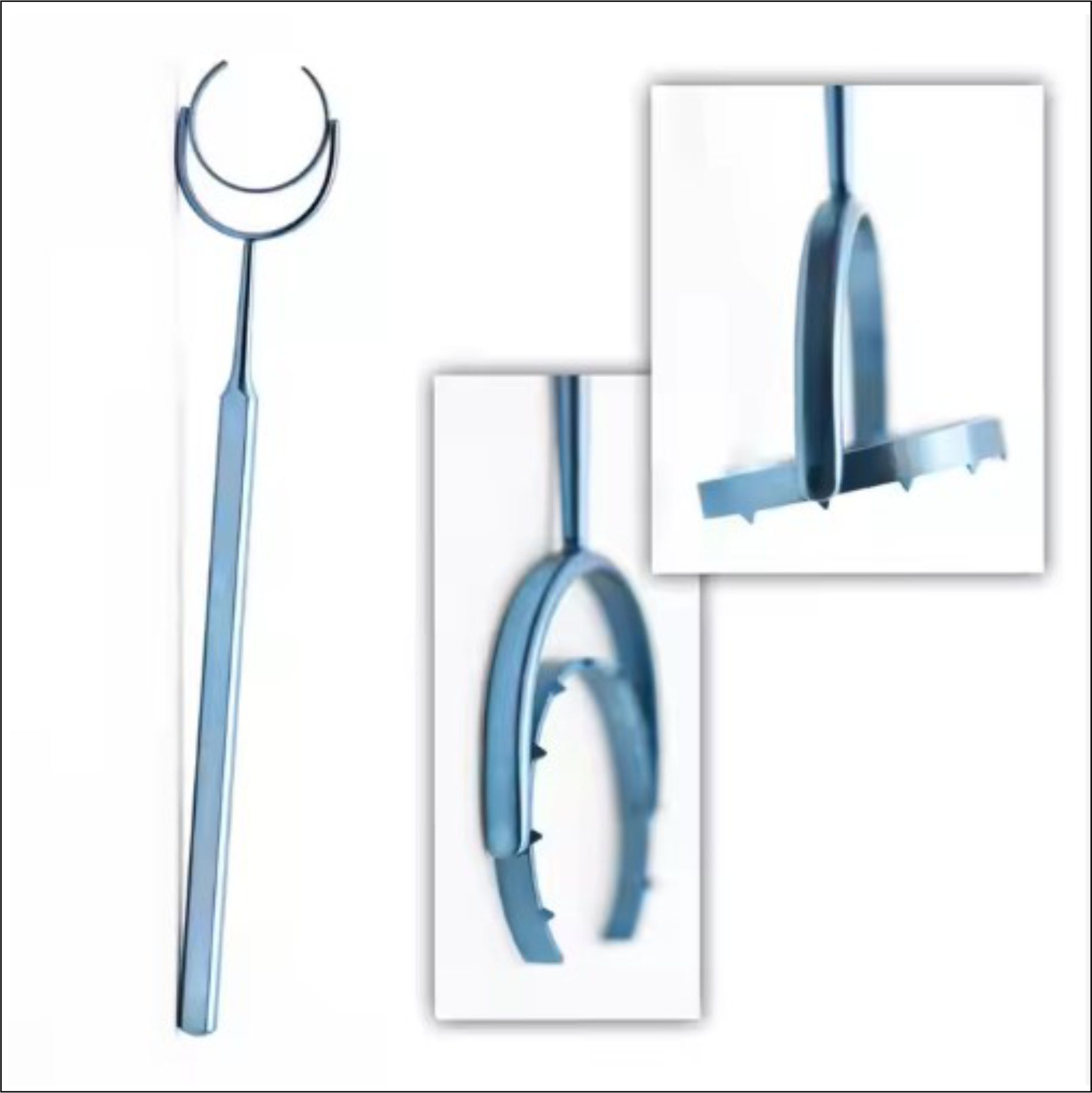Description
Fixation Ring: Detailed Description
A fixation ring is a crucial ophthalmic instrument designed to stabilize the eye during delicate surgical procedures. It minimizes eye movement, allowing surgeons to make precise incisions with greater control and accuracy. Therefore, this tool plays an essential role in cataract surgery, corneal transplants, refractive procedures, and other microsurgical eye operations.
1. Structural Features of a Fixation Ring
A. Handle
- The handle is long, slim, and ergonomically designed, ensuring a comfortable grip.
- Typically, it is made of high-quality stainless steel or titanium, which enhances both durability and sterilization safety.
- In addition, some models feature textured or grooved surfaces to prevent slipping.
B. Stem (Connector)
- The elongated stem connects the handle to the ring, enabling precise maneuverability.
- Furthermore, this section ensures accurate positioning on the eye.
- Depending on the procedure, the stem may have different lengths and angles.
C. Circular or Semi-Circular Ring
- One of its defining features is the ring-shaped end, which may be fully circular, semi-circular, or U-shaped.
- To prevent excessive pressure, the ring evenly distributes force across the sclera.
D. Serrated or Toothed Inner Surface
- The inner edge of the ring includes small, evenly spaced serrations that offer a firm yet gentle grip.
- As a result, these serrations improve stability, reducing slippage and enhancing surgical accuracy.
2. Uses and Applications in Ophthalmic Surgery
Fixation rings serve multiple purposes in eye microsurgery, including:
✅ Cataract Surgery – Helps hold the eye steady while making precise incisions.
✅ Corneal Transplants – Ensures stability during corneal grafting procedures.
✅ Refractive Surgeries – Keeps the eye in position during laser-based vision correction.
✅ Retinal Surgeries – Provides essential control in procedures requiring precise eye movement.
✅ Glaucoma Surgery – Supports eye stability during trabeculectomy or drainage implant placements.
3. Types of Fixation Rings
Because different procedures require unique tools, fixation rings come in various designs:
🔹 Semi-Circular Fixation Ring – Features serrated edges for a stable grip while allowing partial eye exposure.
🔹 Full Circular Fixation Ring – Encircles a larger portion of the eye, ensuring greater control during complex surgeries.
🔹 Suction Fixation Ring – Uses vacuum-assisted suction for enhanced stability, commonly seen in laser eye surgery.
🔹 Adjustable Fixation Ring – Provides customizable positioning based on the patient’s eye anatomy.
4. Material and Design Considerations
Fixation rings are typically manufactured using the following materials:
🔹 Stainless Steel – Known for its strength, corrosion resistance, and ease of sterilization.
🔹 Titanium – A lighter, biocompatible alternative that offers exceptional durability.
🔹 Disposable Plastic Models – Designed for single-use applications, minimizing the risk of cross-contamination.
Since hygiene is critical in surgery, all reusable models are autoclavable, ensuring safe sterilization between procedures.
5. Importance of a Fixation Ring in Surgery
✔️ Prevents involuntary eye movement, leading to greater surgical precision.
✔️ Enhances patient safety by reducing the risk of accidental tissue damage.
✔️ Allows for controlled incisions, contributing to improved surgical outcomes.
✔️ Minimizes the need for additional stabilizing instruments, making procedures more efficient.
6. Conclusion
In summary, a fixation ring is an indispensable tool in ophthalmic surgery, offering stability, control, and precision. Because of its ergonomic design, durable materials, and specialized serrated edges, this instrument remains a top choice for surgeons. Moreover, with multiple variations available, medical professionals can select the most appropriate type based on their specific surgical needs.


